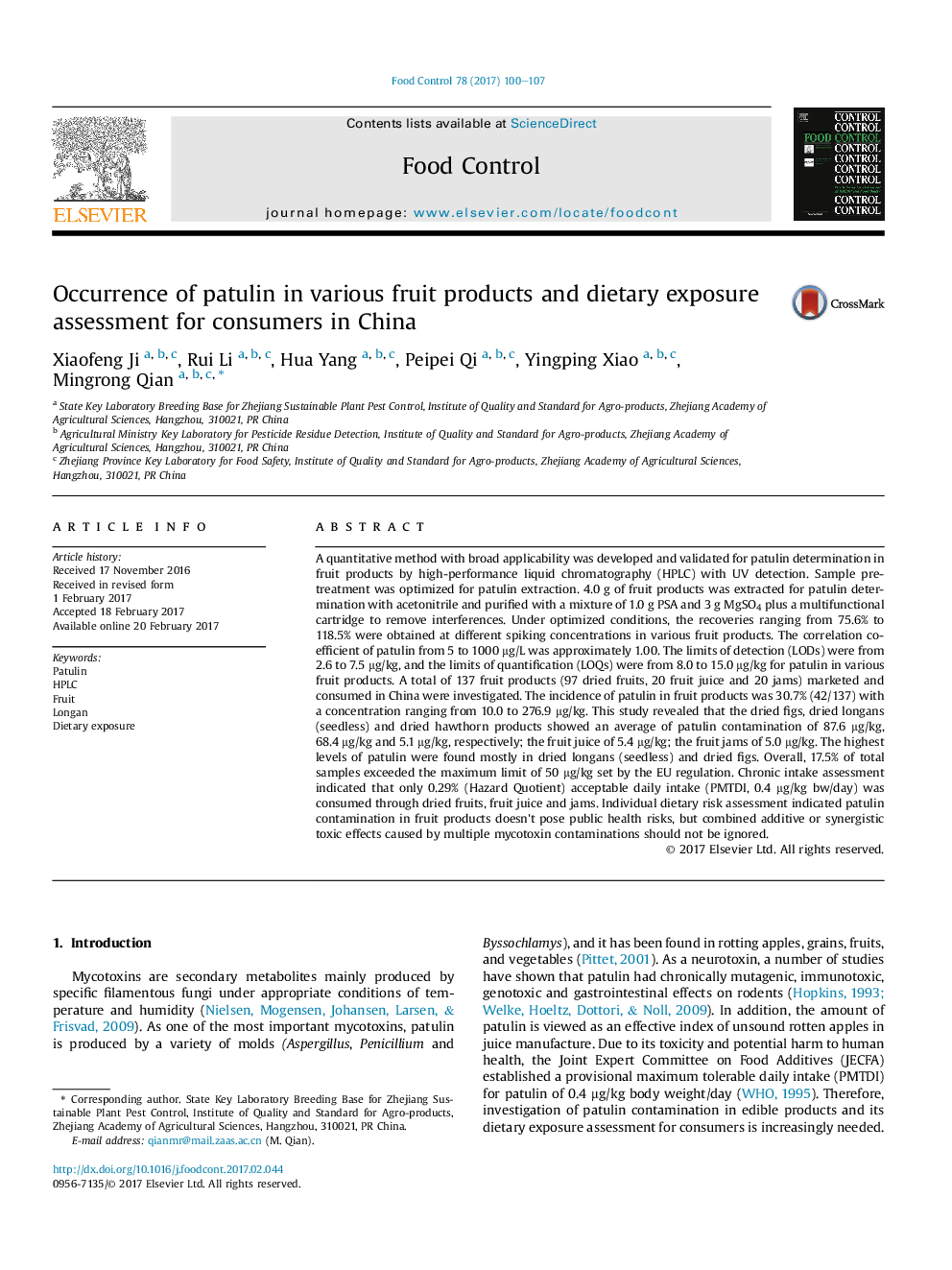| Article ID | Journal | Published Year | Pages | File Type |
|---|---|---|---|---|
| 5767493 | Food Control | 2017 | 8 Pages |
â¢A quantitative method with broad applicability was developed for patulin determination in various fruit products.â¢The occurrence of patulin in fruit products marketed in China was investigated.â¢Dietary exposure of patulin through consumption of fruit products was assessed.
A quantitative method with broad applicability was developed and validated for patulin determination in fruit products by high-performance liquid chromatography (HPLC) with UV detection. Sample pretreatment was optimized for patulin extraction. 4.0 g of fruit products was extracted for patulin determination with acetonitrile and purified with a mixture of 1.0 g PSA and 3 g MgSO4 plus a multifunctional cartridge to remove interferences. Under optimized conditions, the recoveries ranging from 75.6% to 118.5% were obtained at different spiking concentrations in various fruit products. The correlation coefficient of patulin from 5 to 1000 μg/L was approximately 1.00. The limits of detection (LODs) were from 2.6 to 7.5 μg/kg, and the limits of quantification (LOQs) were from 8.0 to 15.0 μg/kg for patulin in various fruit products. A total of 137 fruit products (97 dried fruits, 20 fruit juice and 20 jams) marketed and consumed in China were investigated. The incidence of patulin in fruit products was 30.7% (42/137) with a concentration ranging from 10.0 to 276.9 μg/kg. This study revealed that the dried figs, dried longans (seedless) and dried hawthorn products showed an average of patulin contamination of 87.6 μg/kg, 68.4 μg/kg and 5.1 μg/kg, respectively; the fruit juice of 5.4 μg/kg; the fruit jams of 5.0 μg/kg. The highest levels of patulin were found mostly in dried longans (seedless) and dried figs. Overall, 17.5% of total samples exceeded the maximum limit of 50 μg/kg set by the EU regulation. Chronic intake assessment indicated that only 0.29% (Hazard Quotient) acceptable daily intake (PMTDI, 0.4 μg/kg bw/day) was consumed through dried fruits, fruit juice and jams. Individual dietary risk assessment indicated patulin contamination in fruit products doesn't pose public health risks, but combined additive or synergistic toxic effects caused by multiple mycotoxin contaminations should not be ignored.
